#alexios i komnenos
Explore tagged Tumblr posts
Text

4 notes
·
View notes
Text

The First Crusade: The Call from the East, Peter Frankopan
1 note
·
View note
Text
my collection
#no results for searching alexios i komnenos but they will get there eventually#what is that mountain goats song about against verres of all things ?
8 notes
·
View notes
Text

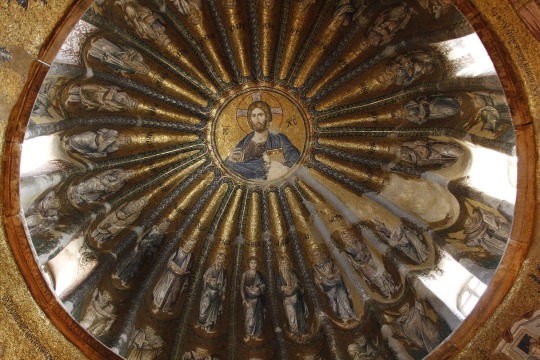

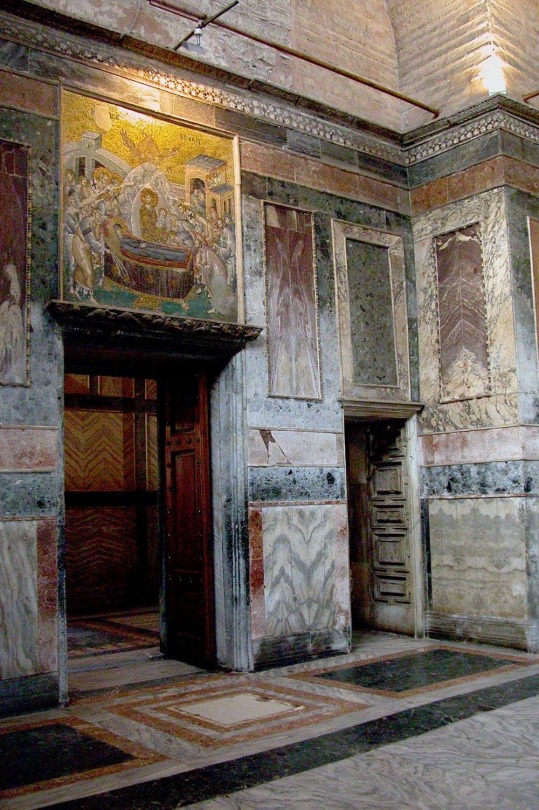
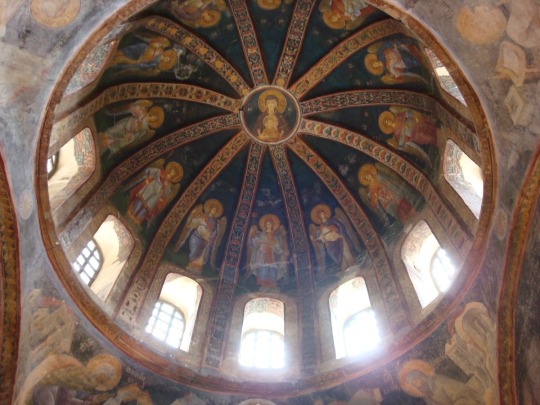
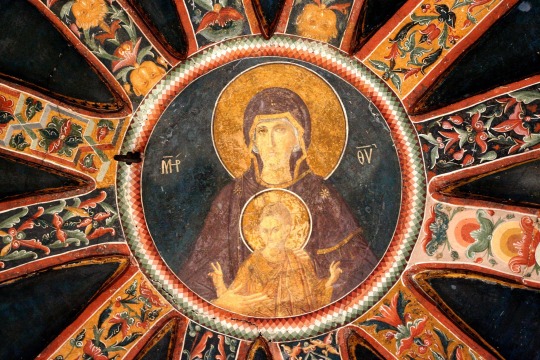

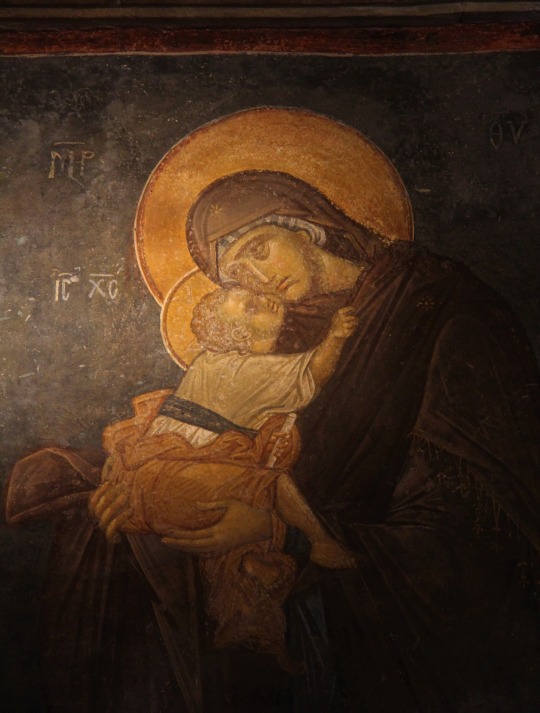
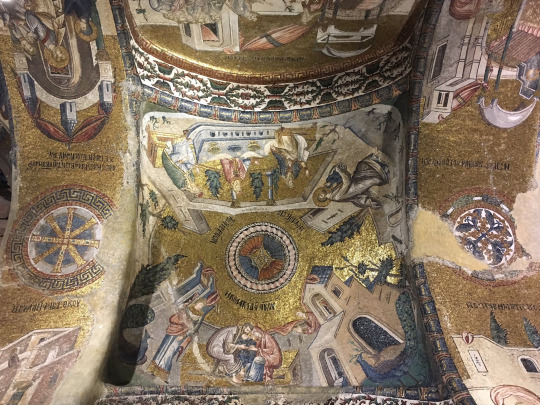

Church of San Salvador de Chora, is one of the most beautiful examples of a Byzantine church that can be seen in the city of Istanbul, Turkey. Although its first construction dates from 536-557, what we can see today is the reconstruction that was carried out between 1077-1081, during the reign of the Byzantine emperor Alexios I Komnenos (he was emperor between 1081 and 1118).Today it is a museum and you can see the richness and beauty of its pictorial and musical works, one of the most important bequeathed by Byzantine artists.
309 notes
·
View notes
Text

Double portrait of Emperor Manuel I Komnenos (r. 1143–1180) and his wife, Empress Maria of Antioch, from a manuscript now in the Biblioteca Apostólica Vaticana. Maria was the daughter of Raymond of Poitiers, Prince of Antioch (r. 1136–1149), and married Manuel in 1161 after his first wife, Irene, had died. Manuel sought to strengthen ties with the Crusader States and sent his chief dragoman, John Kontostephanos, and Basil Kamateros, an officer of the Varangian Guard, to Jerusalem to find a princess for him. Maria, around 16 years old at the time, became empress and remained at Manuel's side until his death in 1180.
After Manuel's death, Maria briefly acted as regent for their young son, Alexios II Komnenos, from 1180 until 1182. However, she was executed on the orders of Manuel's cousin, Andronikos, who returned from exile and usurped power. Seeking to erase her memory, Andronikos defaced and removed most of Maria's images throughout the empire.
-O.G.
#ancient history#archaeology#art history#hellenism#roman art#roman empire#byzantine#byzantine art#byzantine empire#byzantine history#medieval history#medieval art#middle ages#constantinople
12 notes
·
View notes
Text
byzantine emperor alexios I komnenos: greetings my good personal friend pope urban ii pls help a fellow brother in christ against the seljuk dynasty 🙏 im specifically asking u for military aid for the sole purpose of repelling the encroaching enemy force and ejecting them from my domain 🙏 nothing more nothing less I have this one specific concrete plea
pope urban ii: yeah no u got it absolutely im here for u im here to hear so to speak im all over this I got u and the message fr
pope urban ii at clermont 1095: lads LADS listen my good personal friend byzantine emperor alexios I komnenos wants us to *looks at smudged writing on hand* go ape shit and reconquer the holy land!!!!!!!!!!!!!!! everyone who goes gets fast tracked to heaven and all ur sins are forgiven and if u scan this qr code u can print out a cross and put it on ur cloak to get 15% off the first cup of wine once we reach konstantinopel lets ball!
byzantine emperor alexios I komnenos:

97 notes
·
View notes
Text

Day 21: Anna Dalassene, mother of Alexios I Komnenos. Anna took charge of managing her family’s future upon the death of her husband, orchestrating marriage alliances and advocating for her sons to attain positions of command in the military. She was instrumental in Alexios’s rise to the throne and administered from Constantinople while he was away on campaign.
#grayjoytober2024#anna dalassene#historical women#history art#traditional art#byzantium#byzantine empire#byzantine empress#constantinople#medieval#greek tag#roman tag#11th century#inktober#inktober 2024#drawtober#drawtober 2024
10 notes
·
View notes
Text
Wives and Daughters of Byzantine Emperors: Ages at First Marriage
I have only included women whose birth dates and dates of marriage are known within at least 1-2 years, therefore, this is not a comprehensive list.
Theodora, wife of Justinian I; age 35 when she married Justinian in 435 AD
Constantina, wife of Maurice; age 22 when she married Maurice in 582 AD
Eudokia, wife of Heraclius; age 30 when she married Heraclius in 610 AD
Fausta, wife of Constans II; age 12 when she married Constans in 642 AD
Maria of Amnia, wife of Constantine VI; age 18 when she married Constantine in 788 AD
Theodote, wife of Constantine VI; age 15 when she married Constantine in 795 AD
Euphrosyne, wife of Michael II; age 33 when she married Michael in 823 AD
Theodora, wife of Theophilos; age 15 when she married Theophilos in 830 AD
Eudokia Dekapolitissa, wife of Michael III; age 15 when she married Michael in 855 AD
Eudokia Ingerina, wife of Basil I; age 25 when she married Basil in 865 CE
Theophano Martinakia, wife of Leo VI; age 16/17 when she married Leo in 882/883 AD
Helena Lekapene, wife of Constantine VII; age 9 when she married Constantine in 919 AD
Theodora, wife of John I Tzimiskes; age 25 when she married John in 971 AD
Theophano, wife of Romanos II (and later Nikephoros II); age 14 when she married Romanos in 955 AD
Anna Porphyrogenita, daughter of Romanos II; age 27 when she married Vladimir in 990 AD
Zoe Porphyrogenita, wife of Romanos III (and later Michael IV & Constantine IX); age 50 when she married Romanos in 1028 AD
Eudokia Makrembolitissa, wife of Constantine X Doukas (and later Romanos IV Diogenes); age 19 when she married Constantine in 1049 AD
Maria of Alania, wife of Michael II Doukas (and later Nikephoros III Botaniates); age 12 when she married Michael in 1065 AD
Irene Doukaina, wife of Alexios I Komnenos; age 11 when she married Alexios in 1078 AD
Anna Komnene, wife of Nikephoros Bryennios the Younger; age 14 when she married Nikephoros in 1097 AD
Maria Komnene, daughter of Alexios I Komnenos; age 14/15 when she married Nikephoros Katakalon in 1099/1100 AD
Eudokia Komnene, daughter of Alexios Komnenos; age 15 when she married Michael Iasites in 1109 AD
Theodora Komnene, daughter of Alexios Komnenos; age 15 when she married Constantine Kourtikes in 1111 AD
Maria of Antioch, wife of Manuel I Komnenos; age 16 when she married Manuel in 1161 AD
Euphrosyne Doukaina Kamatera, wife of Alexios III Angelos; age 14 when she married Alexios in 1169 AD
Maria Komnene, daughter of Manuel I Komnenos; age 27 when she married Renier of Montferrat in 1179 AD
Anna of France, wife of Alexios II Komnenos (and later Andronikos Komnenos); age 9 when she married Alexios in 1180 AD
Eudokia Angelina, daughter of Alexios III Angelos; age 13 when she married Stefan Nemanjic in 1186 AD
Margaret of Hungary, wife of Isaac II Angelos; age 11 when she married Isaac in 1186 AD
Anna Komnene Angelina, daughter of Alexios III Angelos; age 14 when she married Isaac Komnenos Vatatzes in 1190 AD
Irene Angelina, daughter of Isaac II Angelos; age 16 when she married Philip of Swabia in 1197 AD
Philippa of Armenia, wife of Theodore I Laskaris; age 31 when she married Theodore in 1214 AD
Maria of Courtenay, wife of Theodore I Laskaris; age 15 when she married Theodore in 1219 AD
Maria Laskarina, daughter of Theodore I Laskaris; age 12 when she married Bela IV of Hungary in 1218 AD
Elena Asenina of Bulgaria, wife of Theodore II Laskaris; age 11 when she married Theodore in 1235 AD
Anna of Hohenstaufen, wife of John III Doukas Vatatzes; age 14 when she married John in 1244 AD
Theodora Palaiologina, wife of Michael VIII Palaiologos; age 13 when she married Michael in 1253 AD
Anna of Hungary, wife of Andronikos II Palaiologos; age 13 when she married Andronikos in 1273 AD
Eudokia Palaiologina, daughter of Michael VIII Palaiologos; age 17 when she married John II Megas Komnenos in 1282 AD
Irene of Montferrat, wife of Andronikos II Palaiologos; age 10 when she married Andronikos in 1284 AD
Rita of Armenia, wife of Michael IX Palaiologos; age 16 when she married Michael in 1294 AD
Simonis Palaiologos, daughter of Andronikos II Palaiologos; age 5 when she married Stefan Milutin in 1299 AD
Irene of Brunswick, wife of Andronikos III Palaiologos; age 25 when she married Andronikos in 1318 AD
Anna of Savoy, wife of Andronikos III Palaiologos; age 20 when she married Andronikos in 1326 AD
Irene Palaiologina, daughter of Andronikos III Palaiologos; age 20 when she married Basil of Trebizond in 1335 AD
Maria-Irene Palaiologina, daughter of Andronikos III Palaiologos; age 9 when she married Michael Asen IV of Bulgaria in 1336 AD
Theodora Kantakouzene, daughter of John VI Palaiologos; age 16 when she married Orhan Gazi in 1346 AD
Helena Kantakouzene, wife of John V Palaiologos; age 13 when she married John in 1347 AD
Keratsa of Bulgaria, wife of Andronikos IV Palaiologos; age 14 when she married Andronikos in 1362 AD
Helena Dragas, wife of Manuel II Palaiologos; age 20 when she married Manuel in 1392 AD
Anna of Moscow, wife of John VIII Palaiologos; age 21 when she married John in 1414 AD
Maria Komnene, wife of John VIII Palaiologos; age 23 when she married John in 1427 AD
Helena Palaiologina, daughter of Theodore II Palaiologos; age 14 when she married John II of Cyprus in 1442 AD
Helena Palaiologina, daughter of Thomas Palaiologos; age 15 when she married Lazar Brankovic in 1446 AD
Sophia Palaiologina, daughter of Thomas Palaiologos; age 23 when she married Ivan III of Russia in 1472 AD
The average age at first marriage was 17 years old.
14 notes
·
View notes
Text
Average British celebrity drama magazine:
Ferdinand and Isabella DIVORCE FEARS?!
How Lady Jane Grey Lost Ten Pounds In Just One Day!
Nero on Caligula: "I guess I was just jealous of all the different ways he killed people..."
Alexios Komnenos' Latest Glow-up!
Top Ten Visigoth Looks!
Napoleon on how to get rich quick: "Listen, the trick is to murder lots of innocent people..."
No more More? We interview England's Lord Chancellor on where he is these days.
BONUS: Exclusive interview with HENRY VIII on why he executed Edmund Dudley! ("Eh, he was just kind of a cunt," says king.)
70 notes
·
View notes
Text
Nearly through Yewdale’s dissertation on Bohemond. I’ll have a full review soon. It’s great work but I do find some of his conclusions regarding certain individuals in Bohemond’s sphere very strange.
I strongly object to his assessment of Tancred and his character, in particular, and the motives Yewdale ascribes to him. I also think he has badly misjudged Raymond of Saint-Gilles and mistakes his motivations. His opinion of Alexios Komnenos is likewise far from the mark, in my opinion, and even when Yewdale explains why he makes such assessments, I can’t agree with his logic
These disagreements notwithstanding, it’s an excellent work. Yewdale understands that a man’s life is a story and he has a better grasp on how to tell it than many in academia who have no sense of narrative. He conveys the facts and context of the subject’s life succinctly and effectively, dwelling on the points worthy of exploration and disregarding trivialities.
16 notes
·
View notes
Text
@just-late-roman-republic-things
I think for the women section in Byzantine, you can add Aelia Eudoxia, the wife of Arcadius, Aelia Pulcheria (problematic though, not sure if you want to include her) Aelia Eudocia, the wife of Theodosius II and Galla Placidia.
Anna Komnene who is the author of the Alexiad, a biographical work that accounts Alexios I Komnenos' reign, her father.
Her mother Irene Doukaina.
Empress Theodora, wife of Justinian the Great (I) (for obvious reasons and a famous one, not sure if you include her in your list.)
3 notes
·
View notes
Text
Saints&Reading: Friday, March 29, 2024
march 16_ march 29
Venerable Christodulus, wonderworker of Patmos (1093)
VENERABLE CHRISTODULUS, WONDERWORKER OF PATMOS, MONK (1093)
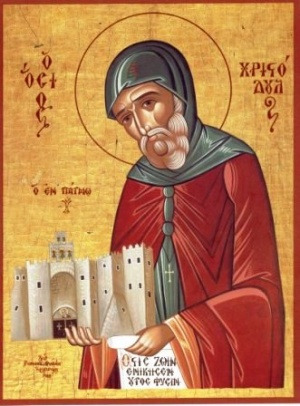
Our Venerable Father Christódoulos 1) was born near Nicaea of Bithynia circa 1020. His parents' names were Theodore and Anna, and their son received the name John in Holy Baptism. He was renowned as an ascetic and a physician throughout the Byzantine Empire.
In 1043 he was tonsured on Mount Olympus, where, under the guidance of the Elders, he received a broad education. After the death of his Spiritual Father, he made a pilgrimage to the holy places in 1045. He visited Rome and Palestine, and he lived in Asia Minor, and on some Greek islands, where he founded several monasteries.
After the Saracen invasion of Palestine, Father Christódoulos left the Holy Land and in 1070 settled on Mount Latmos, in the stavropegial Monastery of the Theotokos in northwestern Karia. Soon he was chosen as the Superior of that monastery. In 1076, Patriarch Cosmas I of Constantinople installed Father Christódoulos as Archimandrite over all the Latmian monasteries. From 1076–1079, he labored to build and fortify monasteries.
In 1079 the Latmian monasteries were destroyed by the Seljuk Turks. The Saint took refuge with his small community in the city of Strovilos on the Aegean coast, where the hermit Arsenios placed him in charge of his monastery. Father Christódoulos soon moved to the nearby island of Kos, the least affected by Muslim incursions. There Arsenios had several estates, and on Mount Pelion, at the latter's suggestion, Christódoulos founded the Kastrian Monastery of the Most Holy Theotokos in 1080.
In 1087, he founded a monastery on the neighboring island of Leros. In addition, during his stay on the island of Kos, Saint Christódoulos organized an expedition to Mount Latmos in order to rescue the books from the monastic community which he had abandoned. These books were sent to the library of the Hagia Sophia in Constantinople for safekeeping.
Seeking greater solitude and austerity, Saint Christódoulos turned his attention to the island of Patmos. He was so struck by the ascetic spirit of these places that he decided to establish a monastery on that island. In 1089, he submitted his first application to Emperor Alexios I Komnenos for a new monastic community on the island of Patmos, in place of the land on the island Kos and on the shores of Karia.
According to a Chrysobull issued in 1088, the Emperor gave the island of Patmos to Father Christódoulos as an eternal, inalienable property, exempting it from all taxes. It forbade government officials to act on the island. In fact, the island was withdrawn from the jurisdiction of the state's administration, and all judicial and administrative power on this island was concentrated in the hands of the Igoumen of the Monastery.
The Venerable one established a monastery on a mountain near the cave, where, according to Tradition, the Holy Apostle John the Theologian received a divine revelation and wrote his prophetic book in the years 68-69. The monastery was built on a rocky ledge, almost in the center of the island, and during the first three years, it had acquired the appearance of a fortress.
However, in the last years of his life, because of the raids of pirates, the Saint was forced to flee Patmos. He and his disciples went to the island of Euboea, where he reposed on March 16,1093. Shortly before his death, he gave his disciples instructions to bury him on the island of Patmos in the Monastery he founded. His disciples took his holy and incorrupt relics and transferred them to his own Monastery, where they remain for the sanctification of those who venerate them with faith.
Saint Christódoulos is also commemorated on October 21 (the transfer of his holy relics).
1 His name means "the servant of Christ."
Source: Orthodox Church in America_OCA

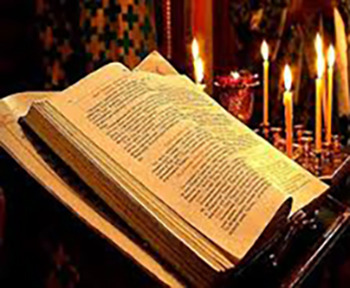
ISAIAH 7:1-15
1 Now it came to pass in the days of Ahaz the son of Jotham, the son of Uzziah, king of Judah, that Rezin king of Syria and Pekah the son of Remaliah, king of Israel, went up to Jerusalem to make war against it, but could not prevail against it. 2 And it was told to the house of David, saying, “Syria’s forces are deployed in Ephraim.” So his heart and the heart of his people were moved as the trees of the woods are moved with the wind. 3 Then the Lord said to Isaiah, “Go out now to meet Ahaz, you and Shear-Jashub your son, at the end of the aqueduct from the upper pool, on the highway to the Fuller’s Field, 4 “and say to him: ‘Take heed, and be quiet; do not fear or be fainthearted for these two stubs of smoking firebrands, for the fierce anger of Rezin and Syria, and the son of Remaliah. 5 Because Syria, Ephraim, and the son of Remaliah have plotted evil against you, saying, 6 “Let us go up against Judah and trouble it, and let us make a gap in its wall for ourselves, and set a king over them, the son of Tabel”— 7 ‘thus says the Lord God: “It shall not stand, Nor shall it come to pass. 8 For the head of Syria is Damascus, And the head of Damascus is Rezin. Ephraim will be broken within sixty-five years, so it will not be a people. 9 The head of Ephraim is Samaria, And the head of Samaria is Remaliah’s son. If you will not believe, Surely you shall not be established.” 10 Moreover, the Lord spoke again to Ahaz, saying, 11 “Ask a sign for yourself from the Lord your God; ask it either in the depth or in the height above.” 12 But Ahaz said, “I will not ask, nor will I test the Lord!” 13 Then he said, “Hear now, O house of David! Is it small for you to weary men, but will you weary my God also? 14 “Therefore the Lord Himself will give you a sign: Behold, the virgin shall conceive and bear a Son, and shall call His name Immanuel. 15 “Curds and honey He shall eat, that He may know to refuse the evil and choose the good.
GENESIS 5:32-6:8
32 And Noah was five hundred years old, and Noah begot Shem, Ham, and Japheth.
1 Now it came to pass, when men began to multiply on the face of the earth, and daughters were born to them, 2 that the sons of God saw the daughters of men, that they were beautiful; and they took wives for themselves of all whom they chose. 3 And the Lord said, “My Spirit shall not strive with man forever, for he is indeed flesh; yet his days shall be one hundred and twenty years.” 4 There were giants on the earth in those days, and also afterward, when the sons of God came in to the daughters of men and they bore children to them. Those were the mighty men who were of old, men of renown. 5 Then the Lord saw that the wickedness of man was great in the earth, and that every intent of the thoughts of his heart was only evil continually. 6 And the Lord was sorry that He had made man on the earth, and He was grieved in His heart. 7 So the Lord said, “I will destroy man whom I have created from the face of the earth, both man and beast, creeping thing and birds of the air, for I am sorry that I have made them.” 8 But Noah found grace in the eyes of the Lord.
#orthodoxy#orthodoxchristianity#easternorthodoxchurch#originofchristianity#spirituality#holyscriptures#bible#wisdom#saints
1 note
·
View note
Note
how would you rank all the alexios’ of the byzantine empire?
I’ll be honest, I’m only really familiar with Komnenos, but he was cool. I like how he saw the invasion at Manzikert and decided that the solution would be to bring another huge foreign army into his territory to stabilize it. in more seriousness, I think he handled the crusade about as well as something that chaotic can be handled
3 notes
·
View notes
Text
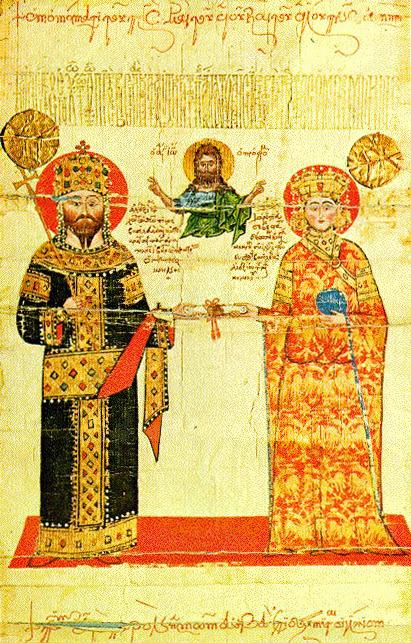
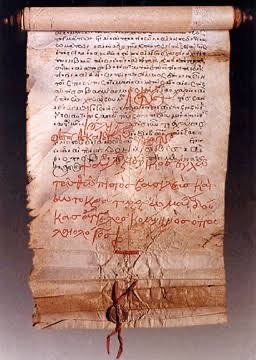
A Golden Bull or Chrysobull was a decree issued by Byzantine Emperors.
The term was originally coined for the golden seal attached to the decree, but came to be applied to the entire decree. Such decrees were known as golden bulls in western Europe and chrysobullos logos, or chrysobulls, in the Byzantine Empire.
For nearly eight hundred years, they were issued unilaterally, without obligations on the part of the other party or parties. However, this eventually proved disadvantageous as the Byzantines sought to restrain the efforts of foreign powers to undermine the empire. During the 12th century, the Byzantines began to insert into golden bulls sworn statements of the obligations of their negotiating partners.
The Golden Bull of 1082, issued by Alexios I Komnenos to grant Venice merchants with free trading rights, exempt from tax, throughout the Byzantine Empire in return for their defense of the Adriatic Sea against the Normans.
2 notes
·
View notes
Photo

Irene Doukaina or Ducaena (c. 1066 – 19 February 1138) was a Byzantine empress by marriage to the Byzantine emperor Alexios I Komnenos. She was the mother of Emperor John II Komnenos and the historian Anna Komnene.
4 notes
·
View notes
Text
Events 4.29
801 – An earthquake in the Central Apennines hits Rome and Spoleto, damaging the basilica of San Paolo Fuori le Mura. 1091 – Battle of Levounion: The Pechenegs are defeated by Byzantine Emperor Alexios I Komnenos. 1386 – Battle of the Vikhra River: The Principality of Smolensk is defeated by the Grand Duchy of Lithuania and becomes its vassal. 1429 – Joan of Arc arrives to relieve the Siege of Orléans. 1483 – Gran Canaria, the main island of the Canary Islands, is conquered by the Kingdom of Castile. 1521 – Swedish War of Liberation: Swedish troops defeat a Danish force in the Battle of Västerås. 1760 – French forces commence the siege of Quebec which is held by the British. 1770 – James Cook arrives in Australia at Botany Bay, which he names. 1781 – American Revolutionary War: British and French ships clash in the Battle of Fort Royal off the coast of Martinique. 1826 – The galaxy Centaurus A or NGC 5128 is discovered by James Dunlop. 1861 – Maryland in the American Civil War: Maryland's House of Delegates votes not to secede from the Union. 1862 – American Civil War: The Capture of New Orleans by Union forces under David Farragut. 1864 – Theta Xi fraternity is founded at Rensselaer Polytechnic Institute, the only fraternity to be founded during the American Civil War. 1903 – A landslide kills 70 people in Frank, in the District of Alberta, Canada. 1910 – The Parliament of the United Kingdom passes the People's Budget, the first budget in British history with the expressed intent of redistributing wealth among the British public. 1911 – Tsinghua University, one of mainland China's leading universities, is founded. 1916 – World War I: The UK's 6th Indian Division surrenders to Ottoman Forces at the Siege of Kut in one of the largest surrenders of British forces up to that point. 1916 – Easter Rising: After six days of fighting, Irish rebel leaders surrender to British forces in Dublin, bringing the Easter Rising to an end. 1944 – World War II: New Zealand-born SOE agent Nancy Wake, a leading figure in the French Resistance and the Gestapo's most wanted person, parachutes back into France to be a liaison between London and the local maquis group. 1945 – World War II: The Surrender of Caserta is signed by the commander of German forces in Italy. 1945 – World War II: Airdrops of food begin over German-occupied regions of the Netherlands. 1945 – World War II: HMS Goodall (K479) is torpedoed by U-286 outside the Kola Inlet, becoming the last Royal Navy ship to be sunk in the European theatre of World War II. 1945 – World War II: Adolf Hitler marries his longtime partner Eva Braun in a Berlin bunker and designates Admiral Karl Dönitz as his successor. 1945 – Dachau concentration camp is liberated by United States troops. 1945 – The Italian commune of Fornovo di Taro is liberated from German forces by Brazilian forces. 1946 – The International Military Tribunal for the Far East convenes and indicts former Prime Minister of Japan Hideki Tojo and 28 former Japanese leaders for war crimes. 1951 – Tibetan delegates arrive in Beijing and sign a Seventeen Point Agreement for Chinese sovereignty and Tibetan autonomy. 1952 – Pan Am Flight 202 crashes into the Amazon basin near Carolina, Maranhão, Brazil, killing 50 people. 1953 – The first U.S. experimental 3D television broadcast shows an episode of Space Patrol on Los Angeles ABC affiliate KECA-TV. 1965 – Pakistan's Space and Upper Atmosphere Research Commission (SUPARCO) successfully launches its seventh rocket in its Rehber series. 1967 – After refusing induction into the United States Army the previous day, Muhammad Ali is stripped of his boxing title. 1968 – The controversial musical Hair, a product of the hippie counter-culture and sexual revolution of the 1960s, opens at the Biltmore Theatre on Broadway, with some of its songs becoming anthems of the anti-Vietnam War movement. 1970 – Vietnam War: United States and South Vietnamese forces invade Cambodia to hunt Viet Cong. 1974 – Watergate scandal: United States President Richard Nixon announces the release of edited transcripts of White House tape recordings relating to the scandal. 1975 – Vietnam War: Operation Frequent Wind: The U.S. begins to evacuate U.S. citizens from Saigon before an expected North Vietnamese takeover. U.S. involvement in the war comes to an end. 1975 – Vietnam War: The North Vietnamese army completes its capture of all parts of South Vietnam-held Trường Sa Islands. 1986 – A fire at the Central library of the Los Angeles Public Library damages or destroys 400,000 books and other items. 1986 – The United States Navy aircraft carrier USS Enterprise becomes the first nuclear-powered aircraft carrier to transit the Suez Canal, navigating from the Red Sea to the Mediterranean Sea to relieve the USS Coral Sea. 1986 – Chernobyl disaster: American and European spy satellites capture the ruins of the No. 4 reactor at the Chernobyl Power Plant. 1991 – A cyclone strikes the Chittagong district of southeastern Bangladesh with winds of around 155 miles per hour (249 km/h), killing at least 138,000 people and leaving as many as ten million homeless. 1991 – The 7.0 Mw Racha earthquake affects Georgia with a maximum MSK intensity of IX (Destructive), killing 270 people. 1992 – Riots in Los Angeles, following the acquittal of police officers charged with excessive force in the beating of Rodney King. Over the next three days 63 people are killed and hundreds of buildings are destroyed. 1997 – The Chemical Weapons Convention of 1993 enters into force, outlawing the production, stockpiling and use of chemical weapons by its signatories. 2004 – The final Oldsmobile is built in Lansing, Michigan, ending 107 years of vehicle production. 2011 – The Wedding of Prince William and Catherine Middleton takes place at Westminster Abbey in London. 2013 – A powerful explosion occurs in an office building in Prague, believed to have been caused by natural gas, and injures 43 people. 2013 – National Airlines Flight 102, a Boeing 747-400 freighter aircraft, crashes during takeoff from Bagram Airfield in Parwan Province, Afghanistan, killing seven people. 2015 – A baseball game between the Baltimore Orioles and the Chicago White Sox sets the all-time low attendance mark for Major League Baseball. Zero fans were in attendance for the game, as the stadium was officially closed to the public due to the 2015 Baltimore protests.
1 note
·
View note